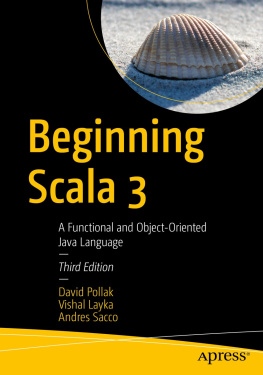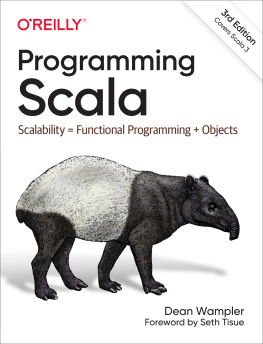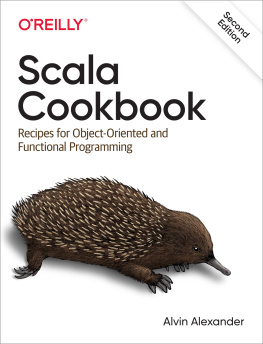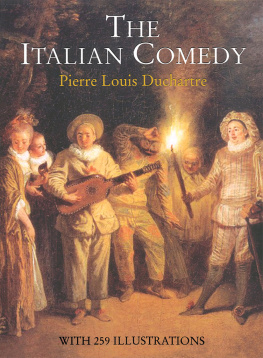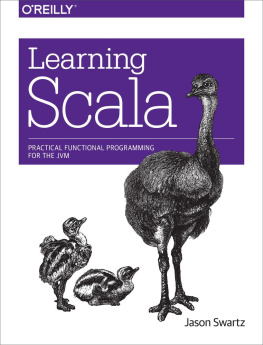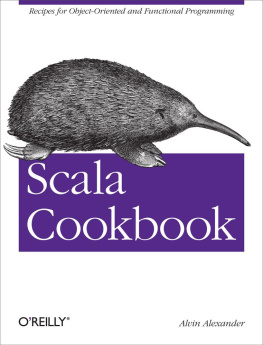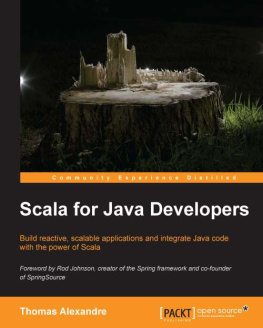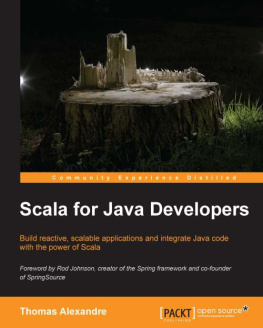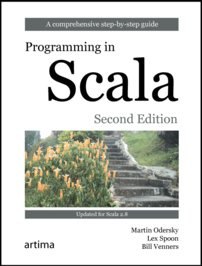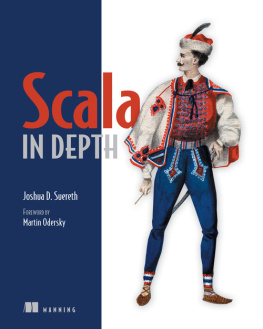Befriending the Commedia dellArte of Flaminio Scala
Befriending the Commedia dellArte of Flaminio Scala
THE COMIC SCENARIOS
Natalie Crohn Schmitt


University of Toronto Press 2014
Toronto Buffalo London
www.utppublishing.com
Printed in Canada
ISBN 978-1-4426-4899-9

Printed on acid-free, 100% post-consumer recycled paper with
vegetable-based inks.
Toronto Italian Studies
Library and Archives Canada Cataloguing in Publication
Schmitt, Natalie Crohn, author
Befriending the commedia dellarte of Flaminio Scala: the comic scenarios /
Natalie Crohn Schmitt.
(Toronto Italian studies)
Includes bibliographical references and index.
ISBN 978-1-4426-4899-9 (bound)
1. Scala, Flaminio, active 1620 Criticism and interpretation.
2. Commedia dellarte Stories, plots, etc. I. Title.
II. Series: Toronto Italian studies
PQ4634.S224.Z55 2014 852.5 C2014-903349-4
University of Toronto Press acknowledges the financial assistance to its
publishing program of the Canada Council for the
Arts and the Ontario Arts Council, an agency of the Government of Ontario.

University of Toronto Press acknowledges the financial support of the
Government of Canada through the Canada Book Fund for its
publishing activities.
To Joel
For more than I can say
Contents
Illustrations
| . |
|---|
. |
. |
Tavola Strozzi, View of the City of Naples in Italy from the Sea, 1470 (depicting the naval victory of Alfonso V of Aragon over John of Anjou). Museo di San Martino, Naples. Public domain. |
Preface
This book began as the result of a class I was teaching on acting period plays. First, as is customarily recommended in commedia dellarte acting manuals, I introduced my students to the characters of commedia dellarte. Having collected various masks similar in style to those of characters in the commedia dellarte, I had the students playing the typically masked or made-up characters the old men, the male servants, and the captain wear these masks as they worked through a number of the lazzi or gags collected in Mel Gordons book of lazzi. I suggested to the students that they might wish to use these lazzi in the scenario that I had randomly selected for them to perform from Henry Salernos readily available translation of the Flaminio Scala collection. It was Day 5, Flavio Betrayed. Had I known at the time that the translation was somewhat unreliable, it would not have concerned me much because I had read that commedia dellarte scenarios were skeletal and that the scenario merely provided a pretext for the entertainment.
While the students had a good time and laughed a lot at their doings in working on the scenario, I became increasingly uneasy. During the following summer I spent a week meticulously working through that Scala scenario, scene by scene, while sitting on the floor and moving miniature plastic cowboys and Indians around in lieu of the scenarios characters. I discovered not only instructions for action, as Tim Fitzpatrick had described, but also character motivations in a very artfully designed plot. Whether the intricacy of the plot had been worked out by the actors, by Scala, or both I could not say, but it became clear that in performance it could not be, as I had read it was, radically different in the hands of different players. Subsequently I worked through a couple of other Scala scenarios, carefully translated, with the same mindfulness. The process was similarly revelatory. In many cases I could not understand much of what was going on in the scenarios or the significance of it, and so I began to read extensively in cultural history. My work, by means of reading and personal queries, was a treasure hunt with serendipitous finds even up to the very end. When I thought I was all but finished, for instance, I came across Deborah Shugers essay on Renaissance mirrors, a piece that indirectly sheds light on the otherwise incomprehensible scene of recognition that concludes Scalas scenario Day 16, The Mirror. Near that time, I also fortuitously learned that musicologists Lucia Marchi and her husband, Robert Kendrick, knew the meaning of singing in the Roman style that is specified in Scalas scenario Day 6, The Jealous Old Man.
The result of my labyrinthine process is the present book, which combines close reading and cultural history to redefine many of the Scala scenarios as carefully crafted works of art that are rich in cultural history. Early in my process, I conducted a class for graduate students, in which, working with reliable translations of the scenarios, they tried to provide reconstructions, as I had done without knowing any cultural history. I studied with Antonio Fava, a noted commedia dellarte performer and mask maker. I directed one of the Scala scenarios with University of Illinois at Chicago students as performers. The latter activities served to convince me that, although I had written about commedia dellarte performance elsewhere, my focus in this book would not be the performance but the scenarios, which continue to be given too short shrift.
While I intend my work to be of use to performers as well as scholars, I do not intend it to be proscriptive. Actors now frequently use improvisation to free themselves from a text. I show the extent to which Scalas actors were dependent on a text and further that the full impact of the scenarios relied on the audiences familiarity with the culture in which the scenarios are imbedded. That culture not only gave significance to the scenarios but also meant that actors, like all those who were part of the early modern rhetorical tradition, had at their command a large amount of memorized material. Actors today do not. In addition, the performances depended on a variety of very diverse dialects and on a kind of verbal exuberance, including long speeches and flowery language not popular today.
I am grateful to University of Toronto Presss editor Ron Schoeffel who began this books process through the press and whose unexpected death on 4 July (after he had, just a few days earlier, cheerfully and affably wished me a happy fourth of July) shocked and saddened me. Suzanne Rancourt, executive editor for scholarly publishing, proceeded
PART ONE
Context, Culture, and Aesthetics

chapter one
Befriending the Text
ORAZIO | arrives reading a letter, and, while reading, knocks at the [door of his own] house; at that |
|---|
PEDROLINO | dressed in felt [probably a felt hat] and boots, telling Orazio that Flavio wants to go to the countryside. Orazio: that there are other things to be done; at that |
|
Next page

